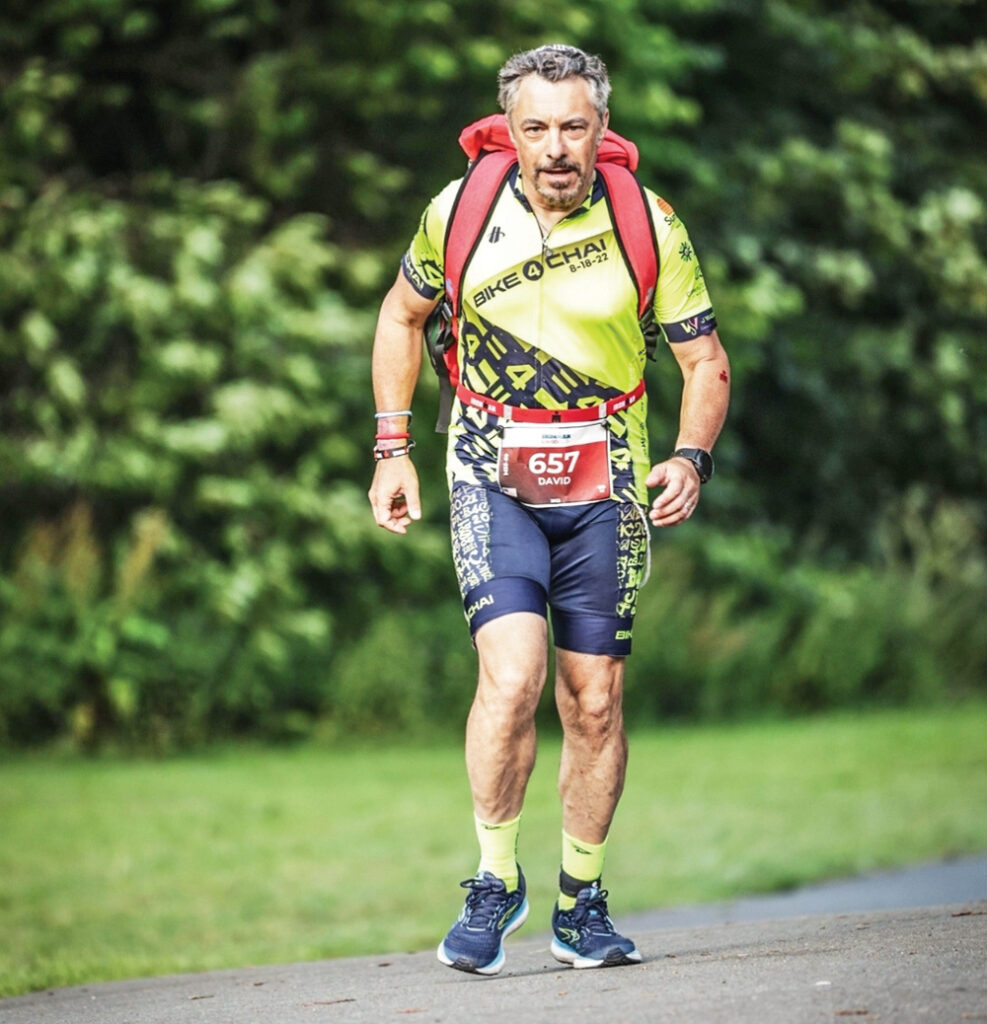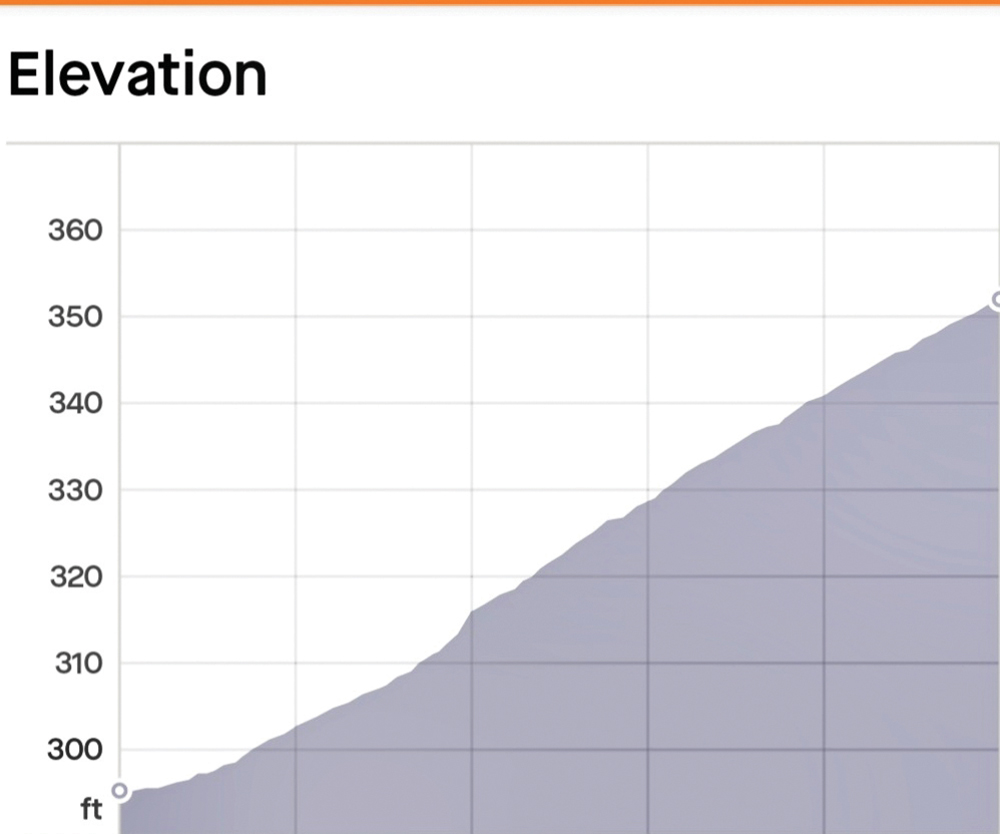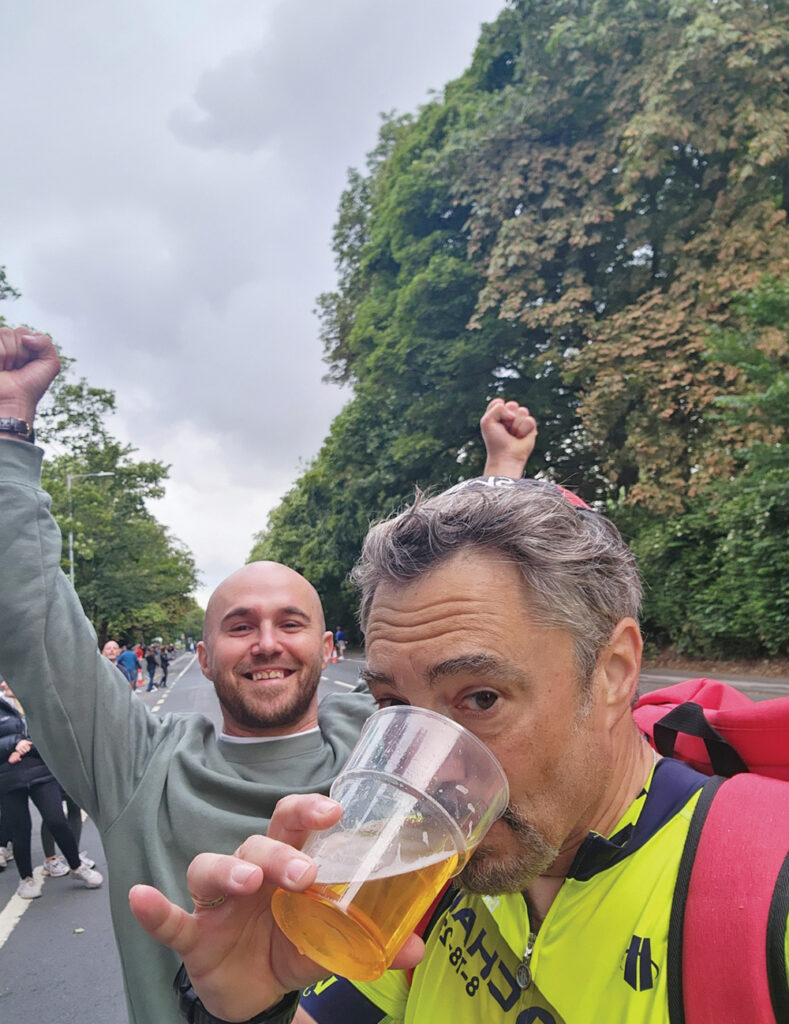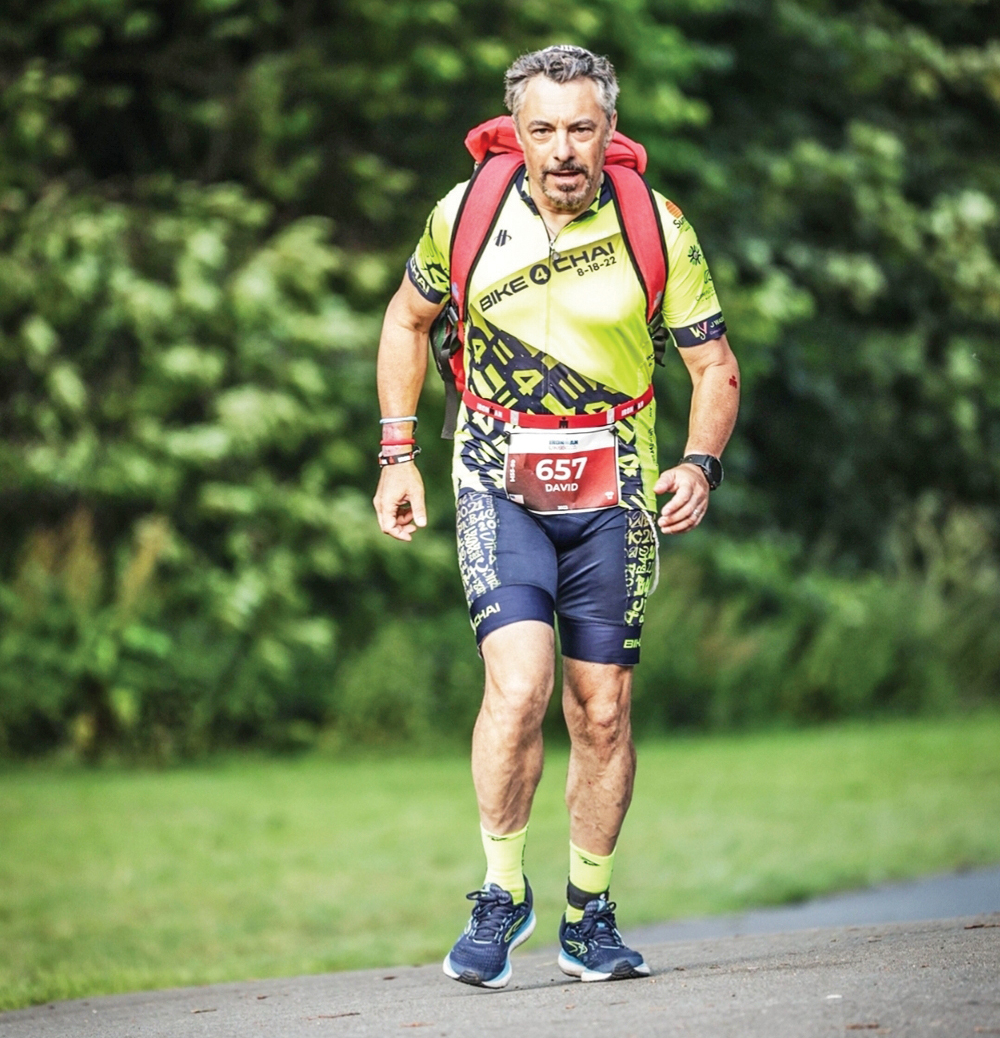
Mile 12: I had been running for two hours and 31 minutes. My half marathon record at an Ironman was two hours, 45 minutes in 2016 at Ironman Lake Placid.
Let’s see if I can beat that.
7:20:12 p.m. (+13:17:26 since race start)
Mile 13.1: 2:39:30 for a half marathon…after biking 112 miles is not bad.

(Is that what you call an improvement?)
Yes, it is. I may not be a sub 10-minute marathon runner, but each year I seem to be getting closer to becoming one.
(I guess all that run training paid off.)
It was more than just the increased training this year.
(More sleep?)
No, actually, less sleep.
(So?)
It was the nutrition. A few years ago, I switched to gels on the run and those seemed to be the best fuel for my body. One gel every 60 minutes kept me moving. The other part was the amino acid capsules. By taking those I was helping to fuel my muscles at a cellular level. Any student who has been taking Living Environment class…
(Which class?)
Back in the day, we called that Biology Class. All students learn that the mitochondria are the powerhouse of the cell and they help to fuel glycolysis.
(Yeah, yeah, yeah. C6H12O6 + ATP = glycolysis.)
Exactly. I called amino acid capsules, gels and a dab of salt on the tongue “the magic cocktail.”
I had been popping the magic cocktail every 60 minutes without fail.
Mile 14: The run from the finish line to the turnaround was only three miles. Each loop was six miles and runners had to do those four times. The first mile was a series of lefts and rights through town with cheering crowds on sidewalks. Between mile 1-2 was the park where we had dropped off our bikes at the end of the 112-mile ride. The path through the park wasn’t long, only a half mile, but there was a “horrible hill” to climb.
(Was it worse than the “crummy” one on the tree lined streets?)
This .13 of a mile climb just humbled me. It was so steep that it reduced my run to a two-minute walk.
On the first loop I powered through to the top of it.
Now, on my third pass, I was resigned to walking this thing … and I wasn’t alone.

Mile 15: It’s 9 .a.nd the sun was out and so were the spectators.
“Hey, can I have a sip of your beer?” I asked.
“Now that’s my kind of Ironman!” Was the reply I got.
(Sidebar, your honor.)
My thinking was that I should be able to consume beer while I’m running. Beer is carbs and runners consume carbs.
I ran this idea past my coaching mentor, Justin Trolle, before we left for Europe. He told me that “It’s fine if you don’t mind the bubbles.”
I’ve sipped beer before on marathons and I’ve always felt a little lift in my step after.
(You drink a whole can?)
No, I took a sip from a solo cup.
8:02:50 p.m. (+14:00:04 since race start)
Mile 16: It was time to start counting down the miles.
Ten miles = two more hours.
(You run faster than that.)
I was factoring in the regression that comes with muscle fatigue as I passed the 130-mile mark.
I still had to complete this race by 11 p.m. and I had fewer than three hours left to do that.
Mile 17: I exited the park on my way into town. I was still two blocks from the finish line in the center of the town square. By now more than half the competitors had completed or dropped out of the race. It was evident by the smaller crowds of runners, but the crowds of spectators were still in large numbers. Even that far away you could hear Joanne the announcer’s voice bouncing off the buildings and rising to a crescendo like an orchestra tuning up before a performance.
8:45:50 p.m. (+14:45:04 since race start)
Mile 20: I was now on the fourth loop. I reached the “horrible hill” and tried to power up the incline. I got halfway up … and I had to walk. It was then that I noticed the drop in air temperature. Most triathlons take place in temperatures between 75 F and 90 F. Marathon runners are often aghast when I tell them this, but triathletes are used to it.
(You like running a marathon in 90 F weather?)
I said I was used to it; I didn’t say I liked it.
But I was running in Bolton, England, and it felt amazing in the 60 F air temp, even when I had to walk 10 feet. It felt so good that at the top of the “horrible hill” I just wanted to keep walking.
(So, what got you running again?)
I looked over my shoulder and I saw…
David Roher is a USAT certified triathlon and marathon coach. He is a multi-Ironman finisher and veteran special education teacher. He is on Instagram @David Roher140.6. He can be reached at [email protected].













